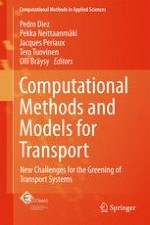This volume addresses challenges and solutions in transport and mobility of people and goods with respect to environment, safety, security and socio–economics issues, exploring advanced computational research work and the latest innovations in transport.
This book brings together lectures presented at the ECCOMAS Thematic CM3 Conference on Transport held in Jyväskylä, Finland, 25-27 May 2015. It is divided into three parts, I: Reviews and Perspective, II: Computational Methods and Models and III: Translational Research. Each of these parts consists of contributions that present solutions to many transport challenges in this complex, rapidly changing subject.
The work contains the latest achievements of European research and technological developments needed for the next decade through computational results of scientific and technical experts who have made essential contributions in transport efficiency in Europe. The material presented here is the state of the art in Transport Modeling, Simulation and Optimization in the fields of Aeronautics, Automotive, Logistics, Maritime and Rails. Furthermore, this volume also answers the question how to apply Computational Research in Transport in order to provide innovative solutions to Green Transportation challenges of identified in the ambitious Horizon 2020 program.
This book is intended for students, researchers, engineers and practitioners that are computationally involved in the deployment of Intelligent Transport Systems (ITS) in the areas of optimal use of road, traffic and travel data, traffic and freight management ITS services, road safety and security, sea traffic management, etc.
